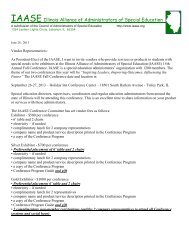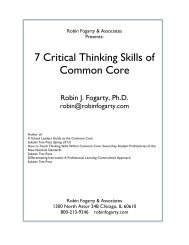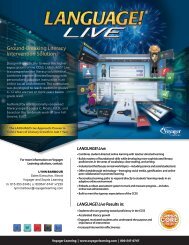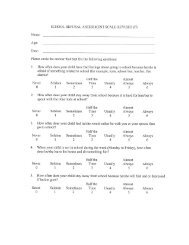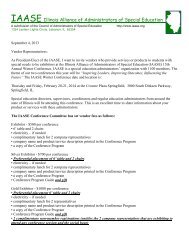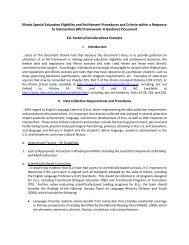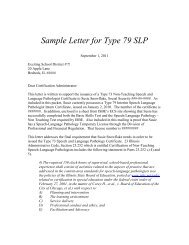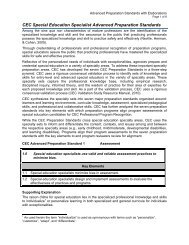Five Words Special Education Directors Fear: “Something ... - IAASE
Five Words Special Education Directors Fear: “Something ... - IAASE
Five Words Special Education Directors Fear: “Something ... - IAASE
Create successful ePaper yourself
Turn your PDF publications into a flip-book with our unique Google optimized e-Paper software.
student’s behavior on the bus, and required the district to assign a trained<br />
paraprofessional to accompany the student on the bus.<br />
2. The IHO found that the use of physical restraint on the bus was permissible. The<br />
teacher assigned to ride the bus with the student was certified in crisis prevention<br />
intervention and trained in the use of de-escalation techniques. The IHO<br />
concluded that the teacher was sufficiently qualified to accompany the student on<br />
the bus until the district trained a paraprofessional to take her place.<br />
15. Are accommodations such as use of helmets and harnesses on the bus an IEP team decision?<br />
Or can school personnel unilaterally require their use to ensure a student’s safety?<br />
<br />
I advise clients that the IEP team must make the decision<br />
A. Currently, there is some disagreement about aspects of transportation that have an impact<br />
on the health, safety or welfare of a student.<br />
B. For example, let’s assume that a harness is not listed on the student’s IEP summary, the<br />
student is wreaking havoc on the bus and parents will not agree to the use of a harness. Is<br />
this an IEP team decision (that requires notice to parent and an opportunity to file for due<br />
process, thus invoking “stay-put”) or is this a unilateral decision that can be made by a<br />
school district? Conservative advice is that adding a harness, etc., is an IEP change that<br />
requires advance notice, allowing parents to invoke the student’s stay-put placement.<br />
C. Savannah R-III School District, 108 LRP 48864 (SEA Missouri 2008)<br />
1. The student (diagnosed with Autism) was six feet one inches tall and weighed<br />
two hundred seventy four pounds. “An uninformed observer might believe that<br />
the Student was a prototypical high school football defensive tackle if he was<br />
seen walking down the street or in the school hallway…. the Student's size and<br />
strength is a factor when it viewed in the context of his recurrent, self-injurious,<br />
head-banging behaviors.”<br />
2. The student’s IEP team recommended that the student wear a helmet at school<br />
and on the bus. Student’s Mother refused mostly because she did not want her<br />
son to look different from his peers. She also reported that the head banging<br />
behavior was a recurring behavior that went away when ignored and that it only<br />
occurred when the student was bored.<br />
3. The student’s IEP team discussed strategies to deal with the head banging<br />
behaviors, including the use of headphones, joint compressions, a full-time bus<br />
monitor, the use of a behavior chart and taking walks with his paraprofessional.<br />
They also developed a Behavior Intervention Plan which addressed his<br />
propensity to bang his head. The IHO held fully in favor of the school district.<br />
16. Must goals/objectives be developed regarding the use of accommodations or related services<br />
on the bus, e.g., harness, air conditioning, medication administration, etc.?<br />
<br />
Generally, no<br />
A. Letter to Hayden, 22 IDELR 501 (OSEP 1994)<br />
Page 14 of 22<br />
900934.1



